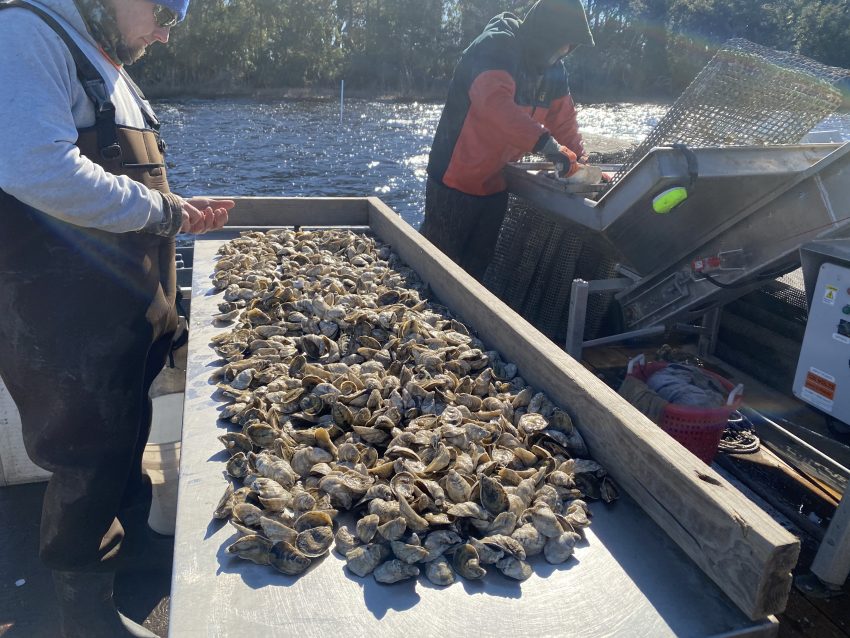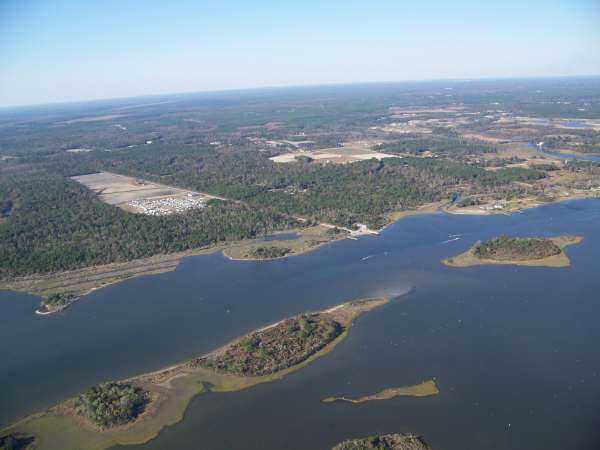The Protection Plan
Stump Sound and the surrounding watershed have been valuable resources to the people of Onslow County for many generations. One of the most recognized and loved resources provided by the sound are the oysters grown within its waters. The inlets and creeks that feed Stump Sound have created the optimal mix of fresh and saltwater for the famed “Stump Sound” oysters. The quality of the water has also created an area that provides wonderful opportunities for fishing and prime nursery habitat for local aquatic species. Due to all of this, the N.C. Department of Environmental Quality has designated the sound as an Outstanding Resource Water, a designation that protects the historic uses of the area.
Unfortunately, nearby land uses have created a source of polluted runoff that has drastically impaired the quality of the water in Stump Sound and the surrounding watersheds. The Coastal Federation recognized the need to protect these ecosystems and restore the water quality of Stump Sound, with support from the N.C. Land and Water Fund, a 2-year watershed management plan is being developed for the sound and its immediate watersheds. These watersheds drain into the intercoastal waterways and Stump Sound and are located north of Surf City, NC, in Onslow and Pender counties.


This project will complete 10 specific goals:
- Identify sources of pollution and other sources of impairment in order to control and reduce their impacts
- Identify the amount of reduction needed for pollutants and stormwater volume in order to meet the expected management measures
- Describe the management measures that will be needed based on the above identifications and identify the critical areas where these measures should be implemented
- Estimate and identify sources of technical and financial assistance, as well as needed involvement from authorities that will be required for plan implementation
- Implement an information and education component in order to enhance the public’s understanding of the project and encourage public participation
- Create a schedule for implementing the management measures that the plan identifies
- Outline milestones in order to determine if management measures and control actions are being implemented
- Create criteria for determining if substantial progress is being made in improving water quality over time
- Design a monitoring component that will evaluate the effectiveness of the efforts and compare results to established criteria, over time
- Continue to manage the project and report findings and progress to the N.C. Land and Water Fund
One of the key goals of this effort will be to develop actions and effective long-term funding mechanisms to help put the plan into action.
The project is designed to improve water quality and protect oyster production, fishing, and recreational activities. It will also allow for the continuation of environmental monitoring and scientific research that will further the community’s ability to understand and protect the ecosystem. In conjunction, the project is reliant upon community education and participation. Therefore, it strives to continue to provide recreational spaces and more opportunities for community involvement in the area.
The People of Stump Sound
In Memory of a Hero – Lena Ritter
Although the Stump Sound Watershed Restoration Project received funding in 2020, the Coastal Federation has been involved in efforts to protect the area for decades. These efforts started with an Onslow County native, Lena Ritter.
Ritter was deeply connected to the waters of Stump Sound as a long-time local, but also as a fisherman. This deep connection gave her the intuition to sense trouble, in 1983, when it was announced that condominiums would be built on Permuda Island, an undeveloped area in the center of the sound.
“The runoff would have ruined it all. A whole way of life was threatened.”
From the article Remembering Lena, Voice of Stump Sound by Frank Tursi, published on CoastalReview.org.
This concern led Ritter to connect with Todd Miller, the founder of the North Carolina Coastal Federation, which was new at the time. Over the next few years, the two worked together with Miller as a guide and interpreter for state rules and Ritter as an organizer for the locals and the fishermen.
The work took Ritter out of her comfort zone as she spoke at public hearings and began taking regular trips outside of Onslow County, something she rarely did before. She quit her job as a fisherman and took up late night shifts at a local pie factory in order to free up time to advocate for Permuda Island. All her hard work paid off at the end when the island was designated as a state coastal preserve. Ritter was awarded the first Nancy Susan Reynolds Award for exemplary leadership, in 1986, for her efforts to protect the waters she loved so much.
Her work did not end there as she continued her involvement with the Coastal Federation as an environmental advocate. Ritter even assisted the Coastal Federation in acquiring a public boat landing in Stump Sound, Morris Landing, in order to preserve it and keep it open to the public.
In 2013, three years before her death, Ritter was awarded the Coastal Federation’s Lifetime Achievement Award. Now, as work continues in Stump Sound and the surrounding watersheds, Lena Ritter is remembered as the woman who kickstarted the protection of these priceless waters.
